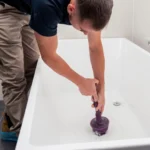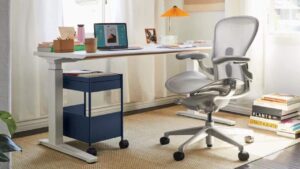U.S. homeowners need heat conditioning to get through the summer heat. It is expensive to install central AC in older homes, especially when forced-air heating is not available.
People choose to install evaporative cooling units, also known as “swamp”, coolers instead of central AC. Swamp coolers make use of a fan to push warm air through a pad that has been soaked in cool water. The pad cools the air and then it enters your home.
Each cooling option has its pros. This is what you should know about each system before you make a decision.
Installation
A swamp cooler installation is easier than an entire AC system. Installing central heating makes it easier. Central heating and air conditioning can share the same ducting, so it is as simple as hooking up the electric lines and fans to distribute air throughout your home.
Swamp coolers are usually installed on the roof. While the unit may not look right on a rooftop, it is easy to install in any other room of the house.
What Does It Cost To Run?
The swamp cooler is the clear winner in the savings category due to its low cost of installation and maintenance. Central air conditioning compressors consume a lot more electricity to operate. A swamp cooler uses electricity only to power a fan and a water pump. They consume only 25% of the energy required by a central AC compressor.
The swamp cooler is the best option for summer cooling for budget-conscious consumers.
Maintenance
Although central AC requires some maintenance, it is not difficult to do.
Evaporative cooler require more maintenance. They need to be winterized and sealed before winter. To prevent mildew from growing, it is important to change the water-holding pads frequently. The pump may wear down and need to be replaced every few years. Swamp coolers will not work for those who prefer to leave the AC on and forget it.
Cool
Swamp coolers and central cooling have different ways of cooling the house. Swamp coolers do not usually have to duct. They circulate through the home using pressure changes. If you keep the windows open in each room, cool air flows through the home, forcing warmer air out. Cool air pulls coolness into each room.
For those who have larger homes, or historic homes with multiple rooms, a swamp cooler might not work as well for them as for those with smaller ranch-style homes or apartments.
Temperature Control
The best thing about central air conditioning? You can set the thermostat to whatever temperature you want. 65 degrees may be the preferred temperature for those who enjoy a cold environment. If you are looking to get rid of the summer heat, 78° may be the right temperature.
You don’t have this advantage with a swamp cooling unit. When temperatures rise to triple digits, your cooler may not be able to provide cold air. Your cooler’s cooling capacity remains the same. If temperatures rise to triple digits, your cooler will still blow colder air than outside.
Weather
The weather is more important for swamp coolers than central air conditioners. To allow the evaporative cool effect to work, the air that passes through the cooler should be extremely dry and warm. The cooler will not work well if there is excessive humidity or a warm storm.











More Stories
What To Do When Your Tub Isn’t Draining: A Comprehensive Guide
Avoiding Pitfalls: How To Select A Reliable Pool Renovation Company In Atlanta?
Top 5 Essential Tips For Effective Fire Damage Restorat